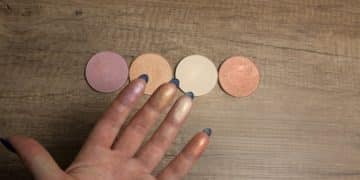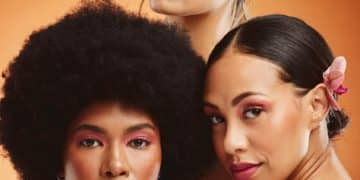The Ultimate Guide to Concealer: Brightening, Correcting & Coverage
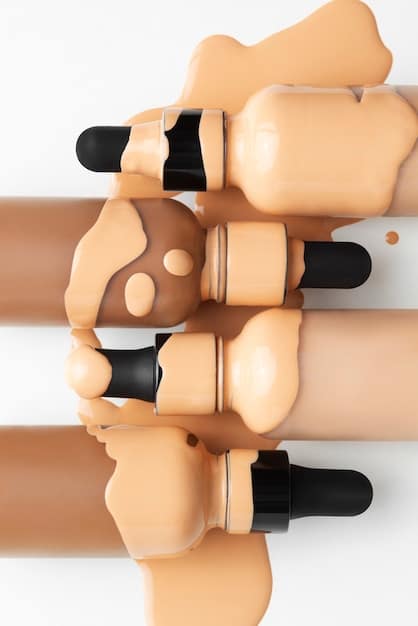
The Ultimate Guide to Concealer: Brightening, Correcting, and Covering offers expert tips on choosing the right formula and color for various skin concerns. Learn how to conceal blemishes, dark circles, and uneven skin tone for a flawless, natural finish.
Concealer is a must-have in any makeup bag, but with so many options, it can be tricky to know where to start. This ultimate guide to concealer: brightening, correcting, and covering will break down everything you need to know to achieve a flawless complexion.
From understanding different formulas and shades to mastering application techniques for dark circles, blemishes, and more, we’ll equip you with the knowledge to confidently choose and use concealer for your specific needs. Are you ready to unlock the full potential of this makeup essential?
The Ultimate Guide to Concealer: Understanding the Basics
Concealer is more than just a cover-up; it’s a versatile tool that can brighten your complexion, correct color imbalances, and provide targeted coverage. Understanding its fundamental role is the first step in mastering its use.
What is Concealer and What Does It Do?
Concealer is a cosmetic product used to mask dark circles, age spots, large pores, and other small blemishes visible on the skin. It’s similar to foundation, but typically thicker and conceals pigments while blending the imperfection into the surrounding skin.
Types of Concealer Formulas
Choosing the right formula is crucial for achieving your desired look. Here are some popular types, each with its own unique benefits:
- Liquid Concealer: Lightweight and buildable, perfect for everyday use and covering blemishes.
- Cream Concealer: Offers medium to full coverage, ideal for dry skin and concealing dark circles.
- Stick Concealer: Provides targeted, full coverage, great for spot concealing and contouring.
- Balm Concealer: Hydrating and blendable, suited for delicate areas like under the eyes and mature skin.
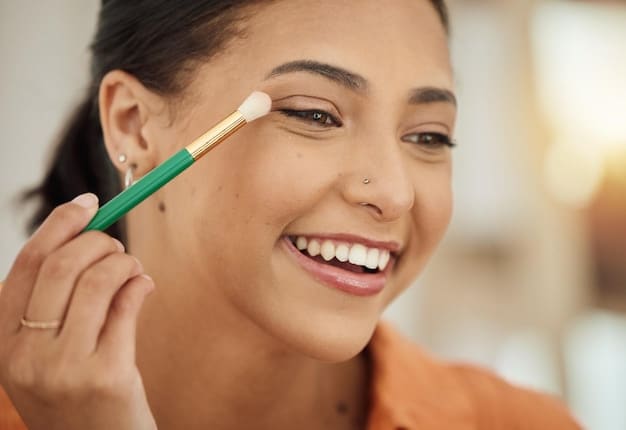
From different consistsencies to various coverages, concealer has many options to choose from. You can pick the best one according to your unique skin.
Choosing the Right Concealer Shade
Selecting the correct concealer shade is crucial for achieving a natural, flawless look. A shade that’s too light or too dark can emphasize imperfections instead of concealing them.
Understanding Undertones
Understanding your skin’s undertone (warm, cool, or neutral) is essential for choosing the right concealer shade. Here’s how to determine yours:
- Warm Undertones: Look for concealers with yellow or golden undertones.
- Cool Undertones: Opt for concealers with pink or blue undertones.
- Neutral Undertones: Choose concealers with a balance of both warm and cool undertones.
Matching Concealer to Your Skin Tone
For concealing blemishes, choose a concealer that matches your skin tone exactly. For brightening, go one to two shades lighter than your skin tone. For color correcting, more specific colors are necessary.
Color Correcting Concealers
Color correcting concealers can neutralize specific skin concerns. Here’s a quick guide:
- Green: Neutralizes redness (e.g., acne, rosacea)
- Peach/Orange: Corrects dark circles and discoloration on darker skin tones
- Yellow: Brightens dullness and corrects mild discoloration
- Purple/Lavender: Counteracts sallowness and brightens light skin tones
Choosing the right concealer shade and color is incredibly important. Make sure that you choose the colors that most compliment your skin to give you the look that you are looking for.
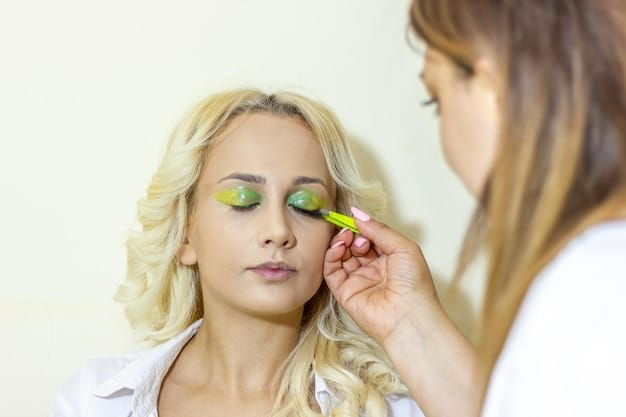
Application Techniques for a Flawless Finish
Applying concealer correctly can make all the difference. Whether you’re covering blemishes, brightening dark circles, or contouring, mastering the right techniques is key.
Concealing Blemishes
For blemishes, use a small, pointed brush to apply concealer directly to the spot. Gently tap the product into the skin to blend.
Brightening Dark Circles
Apply concealer in an upside-down triangle shape under the eyes to brighten and lift the area. Use a damp sponge or your fingertip to blend seamlessly.
Contouring with Concealer
Choose a concealer two to three shades darker than your skin tone to contour. Apply along the hollows of your cheeks, temples, and jawline, then blend well.
Setting Your Concealer
To prevent creasing and ensure long-lasting wear, set your concealer with a light dusting of translucent powder. Press the powder into the concealer with a sponge or brush.
If you use the right application methods for what you are trying to cover up, you will achieve the flawless look that you have been trying to get.
Tips for Long-Lasting Concealer
Making your concealer last all day requires a few essential steps. From priming your skin to using the right setting techniques, these tips will help you maintain a flawless finish.
Prepping Your Skin
Start with a clean, moisturized base. Use a primer to create a smooth canvas for your concealer, especially if you have oily skin.
Choosing the Right Products
Opt for long-wearing, crease-proof concealers. Look for formulas that are specifically designed to stay in place throughout the day.
Setting Techniques
Set your concealer with a finely milled translucent powder. Use a damp sponge to press the powder into the skin for a more natural finish.
Touch-Ups Throughout the Day
Carry a compact with you for quick touch-ups. Blot away any excess oil before reapplying a small amount of concealer and powder.
Use these methods to ensure that you look great all day! There is nothing worse than your concealer only lasting part of your day.
Common Concealer Mistakes to Avoid
Even with the best products and techniques, it’s easy to make common concealer mistakes. Avoiding these pitfalls will help you achieve a more polished and natural look.
Using the Wrong Shade
As mentioned earlier, picking the wrong shade of concealer can do more harm than good. Always test the shade on your skin before purchasing.
Applying Too Much Product
Using too much concealer can create a cakey, unnatural look. Start with a small amount and build up coverage as needed.
Skipping Primer
Primer is essential for creating a smooth base and preventing concealer from settling into fine lines and pores.
Not Blending Properly
Poorly blended concealer can look patchy and uneven. Take the time to blend the product seamlessly into your skin.
Avoiding mistakes when using concealer will ensure that you get the flawless look you desire. If you are not careful, concealer can sometimes make things look worse than they originally were.
| Key Point | Brief Description |
|---|---|
| ✨ Shade Matching | Choose a shade matching undertones for natural look. |
| 🎨 Color Correcting | Use green to counteract redness and peach for dark circles. |
| 💧 Setting | Apply translucent powder to avoid creasing and increase wear. |
| 🧴 Skin Prep | Cleanse and moisturize before applying concealer. |
Frequently Asked Questions
Foundation is used to create an even base on the entire face, while concealer is used for targeted coverage of blemishes, dark circles, or discoloration. Concealer typically has a thicker consistency.
To prevent creasing, prep your under-eye area with a hydrating eye cream. Apply a thin layer of concealer, set it with a finely milled translucent powder, and use a setting spray.
Yes, using the correct concealer shade and application technique can effectively cover acne. Green color-correcting concealer neutralizes redness, while a concealer that matches your skin tone conceals the blemish.
For mature skin, opt for hydrating concealers with light to medium coverage. Apply sparingly and blend with a damp sponge to avoid emphasizing fine lines and wrinkles.
For oily skin, use oil-free, matte concealers. For dry skin, hydrating, cream-based concealers are ideal. Combination skin benefits from lightweight, buildable formulas. Consider your skin’s needs and look for compatible ingredients!
Conclusion
Mastering the ultimate guide to concealer: brightening, correcting, and covering techniques can transform your makeup routine. By understanding different formulas, choosing the right shades, and applying concealer with precision, you can achieve a flawless, natural-looking complexion.
Experiment with these tips to find what works best for your skin and makeup style. With practice, concealer can become your go-to product for a confident and radiant look!
